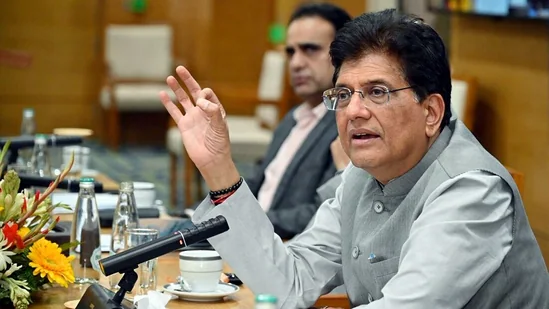India–US Trade Deal: India Signals Progress but Seeks Fair, Balanced Terms
- MGMMTeam

- 2 days ago
- 3 min read
India’s Commerce and Industry Minister Piyush Goyal has offered a strong signal of forward movement in the long-anticipated India–US trade deal, emphasising that New Delhi will agree only when the agreement is “fair, equitable and balanced.” Speaking at the Indo-US Economic Summit in New Delhi, Goyal reframed the public conversation around the negotiations, asserting that India will protect the interests of its farmers, fishermen and small industries while remaining open to deeper trade cooperation with the United States.
Goyal clarified that the momentum between India and the US continues without interruption across defence, technology, space and energy partnerships. Trade negotiations, he said, are simply one part of a broader, multi-layered relationship that remains “stable and without hiatus,” even as both countries explore ways to resolve tariff tensions and market access concerns.

Negotiations Moving Forward Amid Tariff Disputes
Since March 2025, India and the United States have completed six structured rounds of negotiations, signalling a growing willingness on both sides to overcome long-standing barriers. Reports indicate that the first phase of the agreement—primarily focused on tariff adjustments and reciprocal market access—is nearing completion.
The US, however, had earlier imposed nearly 50 percent combined tariffs on specific Indian exports, a move linked partly to India’s purchase of discounted Russian oil. These tariffs created friction and slowed progress, but recent engagements show renewed optimism. Meanwhile, the US continues to push for greater access for its agricultural products—almonds, apples, pistachios and ethanol—while India seeks the removal of punitive duties and protection for its own domestic producers.
India’s Domestic Priorities and Market Ambitions
India’s negotiating stance is shaped by its long-term vision: expanding bilateral trade from the current level of around USD 191 billion to USD 500 billion by 2030. For this to happen, India must ensure that global market integration does not undermine sensitive domestic sectors. Agriculture and small-scale industries remain core concerns, and the government has made it clear that it will not agree to any commitment that may weaken the economic stability of these communities.
At the same time, Indian exporters stand to benefit significantly if the US relaxes tariff barriers and increases market access, especially in sectors such as textiles, pharmaceuticals, machinery and information technology. The challenge for India is balancing these opportunities with necessary safeguards—a balance Goyal insists is non-negotiable.
A Partnership Larger Than a Trade Agreement
While the trade deal is attracting significant public attention, it is only one component of a much larger India–US partnership. The two nations are steadily expanding cooperation in defence manufacturing, semiconductor technology, clean energy transition and digital innovation. Goyal emphasised that the trade agreement must reflect this broader strategic alignment and should not be rushed under external pressure or arbitrary deadlines.
The US, meanwhile, has signalled its desire to finalise the deal within the year, noting “positive developments” and a mutual willingness to resolve long-pending concerns. With high-level ministerial engagements becoming more frequent, the negotiations appear to be entering a decisive phase.
The MGMM Outlook
India’s approach to the India–US trade deal reflects growing confidence in its global economic position, and our viewpoint firmly supports this assertive stance. Piyush Goyal’s emphasis on a “fair, equitable and balanced” agreement shows that India is no longer willing to compromise its farmers, small industries and strategic interests for the sake of diplomatic optics. Even as Washington pushes aggressively for greater agricultural access and maintains steep tariffs linked to geopolitical decisions, India continues to hold its ground with clarity. The progress across defence, technology, clean energy and digital cooperation proves that the India–US partnership is far bigger than a single trade negotiation—making it all the more important that New Delhi ensures no one-sided outcome is accepted under pressure.
From our perspective, India’s insistence on protecting domestic sectors while targeting a USD 500-billion trade ambition by 2030 is not just sensible—it is essential. A rapidly rising India must guard the economic stability of its farmers and small manufacturers while fighting for fairer access for Indian exporters in the American market. The ongoing rounds of negotiation show momentum, but they also highlight India’s careful balancing of opportunity and self-reliance. If the US genuinely wants a long-term strategic and economic partnership, it must acknowledge India’s priorities rather than impose punitive conditions. When the deal is finally announced, it should reflect India’s dignity and strength—aligning perfectly with Goyal’s message that “good news” will come only when the agreement truly respects India’s economic sovereignty.
(Sources: Financial Express, India Today, Business Line)




Comments